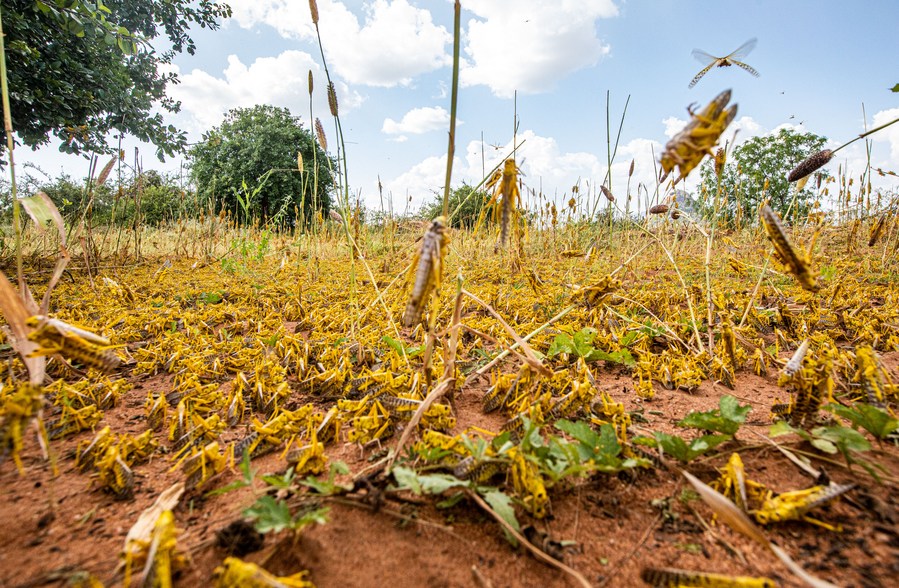
FAO sounds alarm over looming desert locusts infestation in Horn of Africa

The Horn of Africa region could experience another round of desert locusts’ infestation unless mitigation measures are rolled out to avert a potential crisis, a senior official at the Food and Agriculture Organization of the United Nations (FAO) said on Wednesday.
Cyril Ferrand, resilience team leader at FAO’s Sub-regional Office for Eastern Africa said the voracious pests, which have been breeding against a backdrop of favorable weather, could invade large swathes of the Horn of African region.
“The combination of favorable rains since July in Sudan, part of Ethiopia, part of Somalia and Yemen facilitated breeding of a new generation,” Ferrand told Xinhua during an interview in Nairobi.
“In addition, new swarms arrived and will continue arriving from Yemen where we have a limited capacity to conduct surveillance and control,” he added.
According to Ferrand, strong winds that are currently blowing from the northern tip of the Horn of Africa to the south and bringing back the desert locusts to central-south Ethiopia and Somalia could also land them in Kenya in late or early December.
He clarified that the pests may not trigger a large-scale humanitarian crisis in the region compared to last year thanks to deployment of robust surveillance and control measures.
“The situation is serious but not as bad as it was a year ago. Furthermore, we have much more capacities deployed in the entire region to detect early and treat,” said Ferrand.
He said that FAO-led aerial and ground operations to combat the desert locusts across the greater Horn of African region, which commenced early this year, minimized damage to crops and pasture.
“After months of intensive control actions in the entire region (over 1.1 million hectares treated since January), we witnessed a significant recession of desert locust presence between March and September,” said Ferrand.
He said that timely intervention managed to suppress the intensity of desert locusts infestation in Kenya, Uganda and South Sudan, which in turn averted their movements towards the Sahel region.
Ferrand said that robust action on the pests averted loss of nearly 1.7 million tons of cereals that were enough to feed about 15 million people for an entire year.
“In addition, we protected range land from being devastated, which in turn allows livestock belonging to another five million people to graze and produce milk,” said Ferrand.
“All together we talk of around 20 million people whose livelihoods have been protected in 2020,” he added.
The FAO official said that it is possible to minimize the negative impacts of the looming desert locusts infestation in the region such as loss of food crops and pasture, subject to strengthening mitigation measures.
He said that FAO supported control operations in Ethiopia and Somalia are expected to prevent the pests from migrating south to Kenya.
Ferrand said that enhanced surveillance using state-of-the-art technologies combined with application of eco-friendly pesticides is key to averting full-blown desert locust infestations in the region.
“We must continue the good surveillance of the new breeding generation and treat as early as possible,” said Ferrand.






